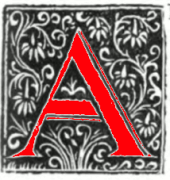
nna Blunden later Martino (1829-1915) was born in London, but brought up in Exeter by parents who it can be supposed were hard pressed, since her father, a bookbinder in the capital, turned to the artificial flower and straw hat trade after their shift to the West Country. This characterisation of the family’s situation is borne out by the fact that Anna, the oldest of three daughters, after attendance at a local Quaker school, was put to train as a governess, working as such in her early twenties (1852-53). This role was considered at that time as a resort reluctantly turned to by the daughters of the struggling middle class.

She hoped rather to make her living through art, however, and moved back to London (where she still had relatives) to enrol at Leigh’s School of Art, supplementing this training with copying at the National Gallery and British Museum. A competent genre scene from Uncle Tom’s Cabin is dated 1853, and the following year she showed at the Academy and at the RSBA – her exhibit at the latter being the now well-known image of a seamstress called For One Short Hour. The following year (1855) she was back in Exeter, though evidently still intent on an artistic career, as she began at this point to address herself to critic and author John Ruskin. From 1855 to 1858 she was offering portrait painting and advertising for pupils, maintaining a picture gallery (i.e. a shop) in the heart of the city. At the same time, she kept a London address
The Ruskin connection was fruitful in several ways, not only in his advice and informal tuition and habit of commissioning copies: in 1857, her work was included in the largely Pre-Raphaelite exhibition of contemporary English pictures sent to New York, and by late 1858 he was offering to find patrons for her work. Ruskin’s advice to Blunden, however, was to give up figure compositions and invest in the painting of nature. She succeeded in this enough to have him notice favourably her Academy exhibits of 1858 and 1859, Past and Present and God’s Gothic, respectively. Commendations from Ruskin always drew attention, and the latter work was purchased by the artist David Roberts. By 1864, Blunden’s exhibits were being grouped by critics with declared Pre-Raphaelite landscapists such as John Brett.
The landscapist must travel, and Blunden found her subject-matter for the next decade in such established scenic areas of Britain as South Wales, the Lake District and Cornwall. Travel abroad brought access to a wider range of sites, and living in Europe could be cheaper in the mid-Victorian period than living in London, and in 1867 Blunden made her first visit to the Continent; by 1870 she was reported as having a studio in Rome. She was later said to have had "a long residence" in Italy and Switzerland until her marriage in 1872 to her brother-in-law Frank Richard Martino, widower of the artist’s younger sister Emily and a successful businessman.
Such a marriage was not permitted in England at that time, so they tied the knot while in Germany, returning to reside in Birmingham, where the Martinos had been living since their marriage in 1869. Here, for years Blunden bore the brunt of the community’s disapproval of her domestic situation (her husband was seven years her junior, to boot) – an ordeal that reportedly made her very bitter in her older years. Martino already had a son by Emily and the new couple had a daughter in 1874, but Blunden still found time for painting, becoming a regular exhibitor with the Birmingham Society of Artists until the turn of the century.
Bibiliography
Anon. “Edgbastonians past and present”, Edgbastonia XVIII, no. 209 (October 1898): 204-9.
Clayton, Ellen C. English Female Artists. London: Tinsley. 1876: II, 198-226.
Marsh, Jan, and Pamela Gerrish Nunn. Pre-Raphaelite Women Artists. Manchester: Manchester City Art Galleries, 1998.
Surtees, Virginia ed. Sublime and Instructive: Letters from John Ruskin. London: Michael Joseph, 1972
Created 24 March 2022